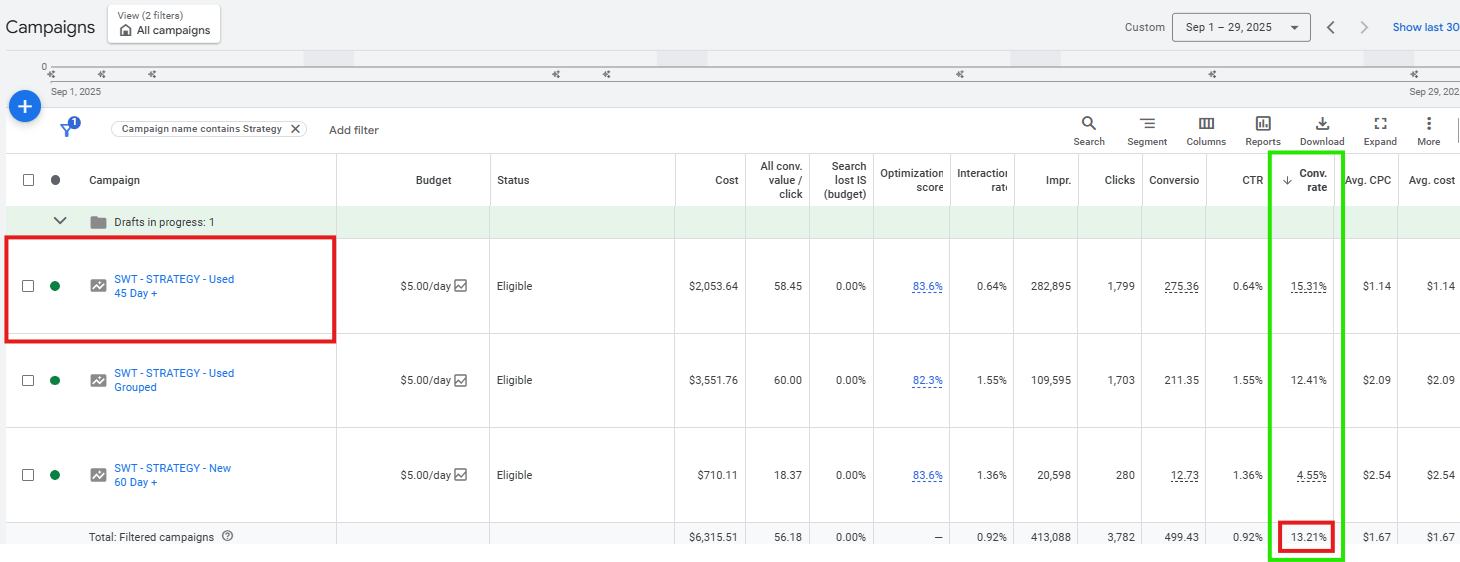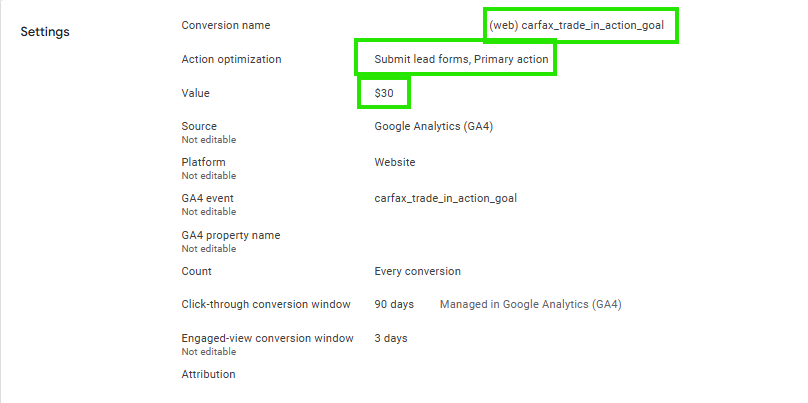Car dealerships spend thousands of dollars every single month on Google Ads, hoping that these campaigns will drive more buyers onto their lots and into their showrooms. But when the performance reports arrive, which are usually filled with charts, percentages, and acronyms, many dealers end up asking the same two questions: “Are these results good” and “How do we really know?”
The truth is that the problem isn’t the lack of data. If anything, there’s too much of it. The bigger issue is that most of the numbers highlighted in Google Ads dashboards, such as impressions, clicks, and cost-per-click (CPC), don’t answer the one question every dealer cares about: Are these ads helping us sell more cars?
Let’s break down the standard metrics that often confuse dealers, what they mean, and, most importantly, which numbers you should be paying attention to if you want your ad spend to work more effectively.
1. Don’t Overvalue Clicks: CTR and CPC Aren’t Sales
Clicks are not the same as conversions. A campaign might report a high click-through rate (CTR) or a low CPC, but if those clicks never translate into test drives, showroom visits, or signed paperwork, they’re just worthless.
A good CTR varies and usually looks like this:
- Search Ads → 6–10% CTR
- Vehicle Listing Ads (VLAs) → 1.5–2.5% CTR
- Display Ads → 0.5–1% CTR
(Source: Word Stream, 2023)

On paper, these metrics for your campaigns can be misleading. Remember that efficiency does not necessarily equal profitability. Paying $1 per click that leads nowhere is far worse than paying $3 for a click that results in a booked appointment. CTR and CPC can help you understand whether your ads are being delivered effectively, but they don’t prove successful.
2. What to Track Instead: CPA and CVR
For clarity, shift your focus to tracking Cost Per Acquisition (CPA) and Conversion Rate (CVR). This is because CPA helps you determine how much money you’re spending to generate a lead, and CVR shows effectively your ads and landing pages are converting clicks into actual leads. These numbers directly tie your ad spend to results that matter, specifically qualified leads and real customers.
Benchmarks for automotive campaigns look like this:
- Search Ads → CPA: $10–$25 | CVR: 10–12%
- VLAs → CPA: $6–$12 | CVR: 5–8%
- Display Ads → CPA: $10–$20+ | CVR: 1–3%
(Source: Cox Automotive, 2025)

3. Vehicle Listing Ads Work Differently
Many dealers mistakenly judge Vehicle Listing Ads (VLAs) by CTR or CPC, but VLAs aren’t search ads. They’re dynamic product feeds that showcase your real inventory. The better way to evaluate them is by measuring:
- Vehicle Detail Page (VDP) views
- Cost per VDP view
- Lead-to-sale ratio from VDPs
- Location engagement based on buyer intent
To gain even more accurate insights, segment your inventory rather than lumping it all together. Look at:
- New vs. Used
- On-brand vs. Off-brand
- Fresh vs. Aged (45+ days) inventory
- Trucks vs. SUVs vs. Sedans

This way, you’ll know exactly which types of vehicles your ads are moving, and which ones are getting ignored.
For more information on this check out my article on how to make sure your vehicles listing ads are performing.
4. Don’t Let Automation Take Over
Google’s Performance Max (P-Max) campaigns can be useful, but many dealers fall into the trap of letting automation run unchecked. The risk of this approach is that it can lead to budget waste without yielding any meaningful results. Also, common pitfalls you should avoid include:
- Overly broad geo-targeting that wastes spend on irrelevant markets
- Duplicate or irrelevant audience signals that confuse the algorithm
- Feed errors that reduce visibility in search results
- Tracking weak actions (like “time on site”) as conversions
The solution to this is simple: stay in control. Tighten your location settings, clean up your inventory feed, and only track conversions that have real value to your dealership.
5. Fix Your Conversion Tracking
This is where many dealerships go wrong. Too often, everything is counted as a conversion, such as page scrolls, video views, form starts, or time spent on the site. These inflate results and create a false sense of success.
Instead, you should only count real business actions, such as:
- Completed forms
- Phone calls longer than 30 seconds
- Booked appointments
- Completed credit applications
And don’t stop there, assign actual dollar values to each action. For example:
- Credit application = $150
- Form lead = $75
- Soft lead (chat inquiry) = $25

By feeding these values back into Google Ads, the system learns to prioritize high-value leads instead of wasting its budget on low-value leads.
6. Track the Whole Funnel, Not Just Ads
Even the best ads can fail if the sales process on the ground is broken. That’s why it’s essential to measure the entire funnel from the first click to the final sale.
Industry benchmarks suggest:
- Lead-to-Appointment → 30–40%
- Appointment-to-Show → 55–60%
- Show-to-Sold → 25–35%
(Source: Dealer.com)

If your ads generate a high volume of leads but sales numbers remain stagnant, the issue may not be the campaign itself; it could be how your team handles the leads.
7. A Simple Scorecard for Dealers
Here’s a quick reference scorecard to cut through the noise:
- CTR: 6–10% (Search), ~2% (VLA)
- CPC: <$2.50 (Search), <$1.00 (VLA)
- CVR: 10%+ (Search), 5–8% (VLA)
- CPA: <$15 (Search), <$10 (VLA)
- Funnel Benchmarks: 30–40% | 55–60% | 25–35%
Use this framework in conjunction with inventory levels, customer intent, and location-specific data to gain a comprehensive view.
Focus on Outcomes
Clicks don’t sell cars. Leads and sales do. Too many dealerships get distracted by chasing cheap clicks or celebrating high impressions. However, the smarter approach is to build solid conversion tracking, assign value to every type of lead, and measure results throughout the entire funnel, from the initial search to the final conversion.
When you track the right numbers, you stop wasting budget and start creating a system where your advertising spend works for you instead of against you. And that’s when Google Ads transforms from a confusing expense into a predictable engine for growth.
— Herb Anderson




